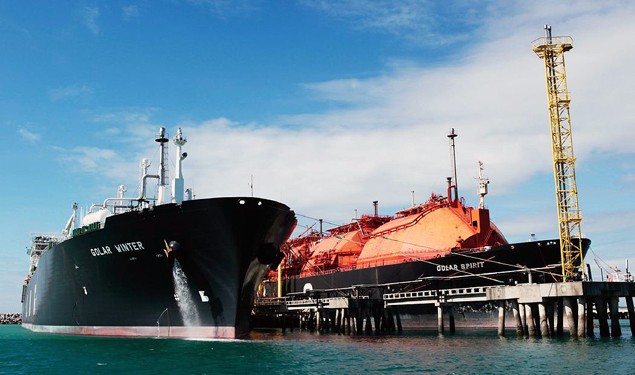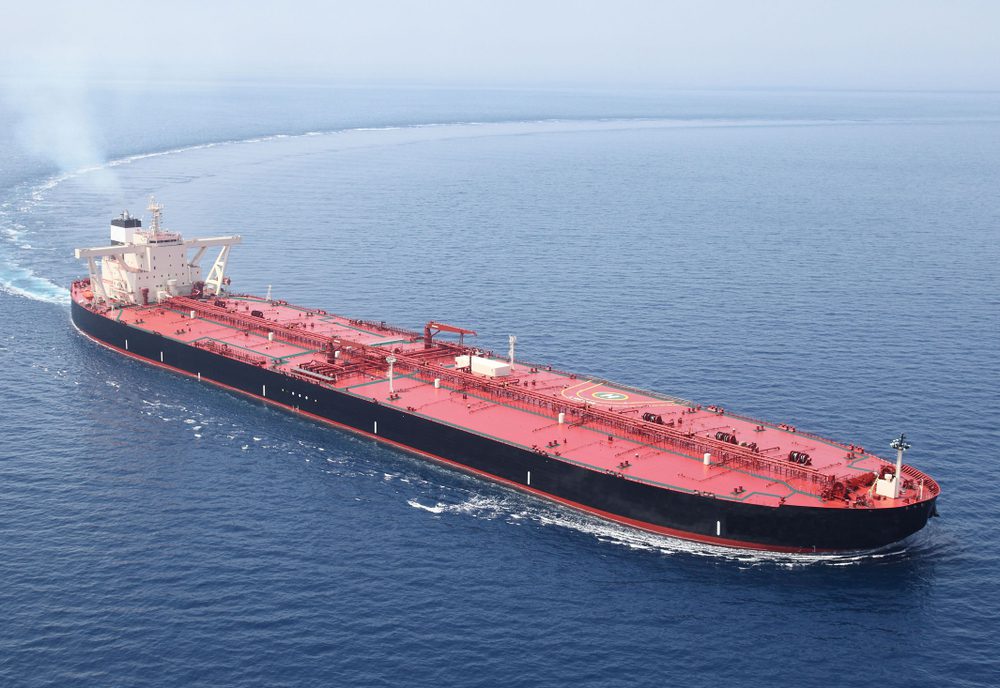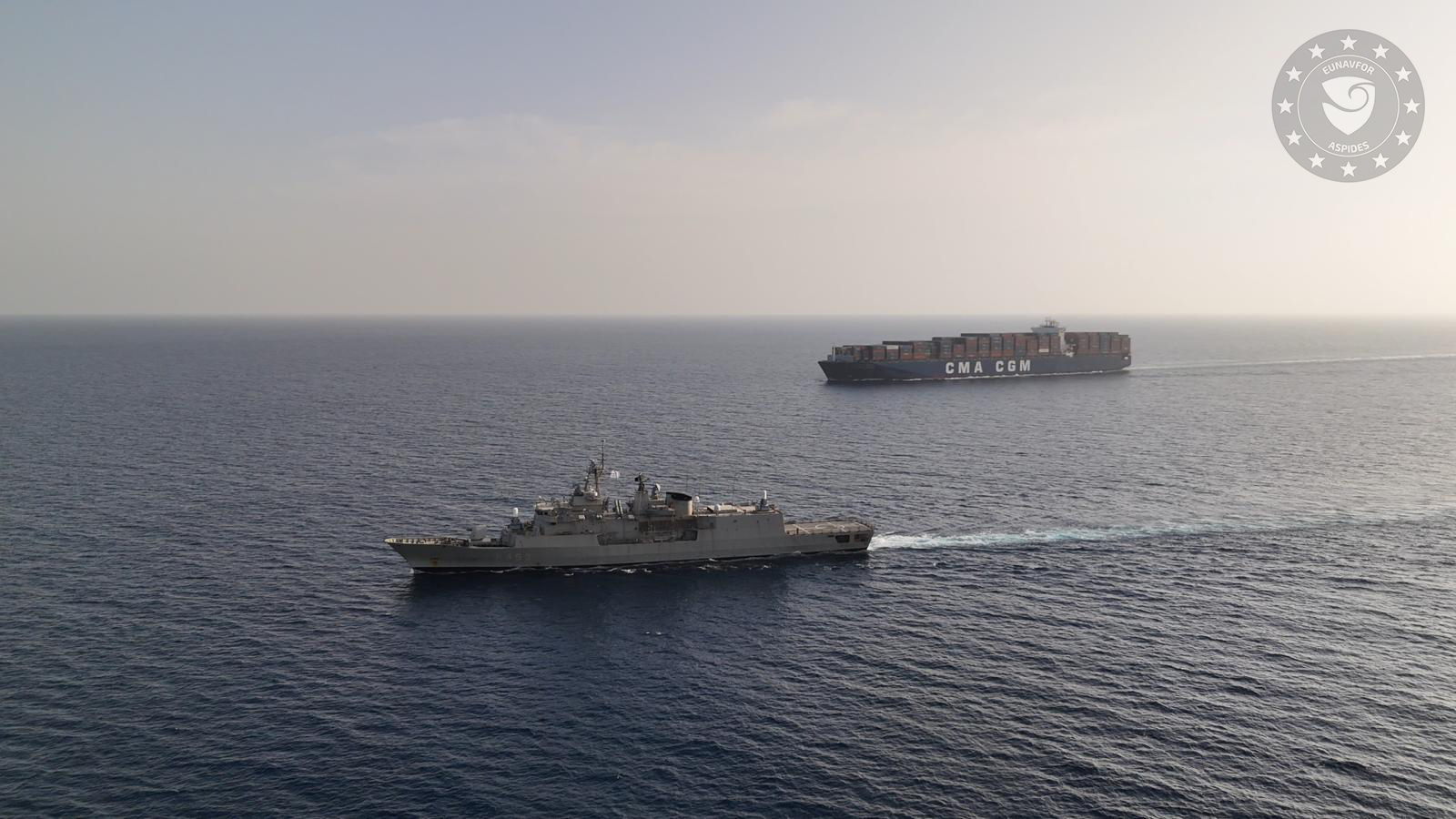Image: Golar LNG
Jan. 22 (Bloomberg) — Rates to ship liquefied natural gas are dropping for the first time in four years amid a diminishing scarcity of the carriers transporting the fuel, a bullish sign for investors in the biggest owners of the vessels.
Golar LNG Ltd., the tanker company founded by billionaire John Fredriksen, will report record profit this year and its shares will gain 22 percent in 12 months, analyst estimates compiled by Bloomberg show. Lower rates mean fewer new vessels are being ordered, according to Arctic Securities ASA in Oslo. Shortages will return by 2016, says London-based Clarkson Capital Markets LLC, a unit of the world’s biggest shipbroker.
Earnings tripled in the past five years at a time when most of the merchant fleet lost money because of capacity gluts. Daily rates will retreat 7.3 percent to an average of $139,000 this year, the median of seven analyst estimates shows, as the market swings from a shortage of 11 vessels to a surplus of one carrier. Fewer orders are good for the biggest owners because the LNG industry will expand production capacity by 77 percent in the next seven years, Morgan Stanley says.
“When the market is growing, even if you have one year of high fleet growth versus demand growth, it’s a matter of time before demand will catch up and that will hold the market at very profitable levels,” said Fotis Giannakoulis, an analyst at Morgan Stanley in New York. “I don’t think there are many industries offering this type of return today.”
Fukushima Disaster
Tanker rates reached a record last year as Japan, the biggest LNG importer, accelerated buying to compensate for its nuclear power plants closing after the Fukushima disaster in April 2011. Costs will drop as demand expands 5.6 percent and the fleet 6.9 percent, according to Clarkson Capital Markets. While the glut will reach 19 next year, the market will revert to a deficit by 2016, the banking unit of Clarkson Plc says.
Golar, based in Hamilton, Bermuda, operates nine LNG carriers and has orders for 11 more, exceeding the expansion plans of any other publicly traded owner. Shares of the company jumped 7 percent to $39.34 this year and will reach $48.13 in 12 months, the average of 12 forecasts shows. Net income will surge 47 percent to $201.3 million this year and $375.3 million in 2014, according to the median of as many as 12 estimates.
Qatar Gas
Qatar Gas Transport Co., the largest LNG tanker owner, will report a 12 percent gain in profit to $232.9 million this year, the median of three estimates shows. The company’s ships typically don’t trade in the spot market. MISC Bhd., based in Kuala Lumpur, is the second-largest operator and will more than double earnings to 1.18 billion ringgit ($389 million) in 2013, the median of 13 estimates shows. It has 27 LNG tankers out of a fleet of 135 ships, data on its website show.
Owners probably will hold off ordering more ships for now because about 40 percent of those already scheduled to be built at yards lack charters, Clarkson says. That means there is no certainty they will secure business once they are completed, increasing the risk of the purchase. They cost about $185 million each, twice as much as a supertanker, because they need equipment to hold gas cooled to minus 160 degrees Celsius (minus 256 degrees Fahrenheit) so it occupies 600 times less space.
Demand for tankers may fall short of expectations if new LNG production is delayed. Two of the three projects scheduled to start in 2012 still aren’t shipping cargoes. Angola LNG will open the African nation’s first liquefaction plant in the first quarter, about a year later than planned, Petroleum Minister Jose Maria Botelho de Vasconcelos said last month. The facility will produce enough gas to supply Japan for about 22 days.
Worst Recession
Gains in LNG consumption may stall if the world economy weakens. Japan and the 17-nation euro area are already back in recessions, and the World Bank this month cut its forecast for 2013 growth to 2.4 percent from 3 percent. The estimate for Japan dropped to 0.8 percent from 1.5 percent. Global gas demand contracted 2.5 percent in 2009 amid the worst recession since World War II, according to data compiled by BP Plc.
The expansion in Japanese consumption may also slow should the nation start reopening its nuclear plants. While all but two of its 50 facilities are still shut down, Shinzo Abe’s Liberal Democratic Party won elections last month pledging to restart reactors to damp energy costs.
LNG sold in Japan at an average of $17.34 per million British thermal units last year, compared with $9.53 in Europe and $2.89 in the U.S., according to data from Poten & Partners Inc., a New York-based shipbroker. That lured more cargoes from the Atlantic region, adding as much as 13,000 miles to voyages and effectively reducing the fleet’s capacity.
Shipping Industry
The profitability of LNG tankers contrasts with most of the rest of the shipping industry, which is enduring gluts after owners ordered too many vessels when rates surged in 2007 and 2008. The Baltic Dry Index, a measure of the cost of hauling coal and iron ore, plunged 60 percent last year and the Baltic Dirty Tanker Index, reflecting rates for ships carrying oil, tumbled 18 percent.
Global liquefaction capacity will grow 2.8 percent to 261 million metric tons this year and reach 461 million tons in 2020, according to Morgan Stanley. The tanker fleet will expand 17 percent by 2018 from last year, according to the bank, which cited existing orders at ship yards.
The U.S. government is reviewing applications from companies seeking to build export terminals with a combined capacity of 24 billion cubic feet of gas a day as LNG. That would require as many as 135 tankers ordered by 2017, Morgan Stanley estimates. There are 372 currently in service, according to Clarkson.
Marine Engineering
Shipyards have limited capacity to accelerate building and can produce about 50 to 60 tankers a year, Clarkson estimates. The biggest builders are Samsung Heavy Industries Co., Daewoo Shipbuilding & Marine Engineering Co. and Hyundai Heavy Industries Co.
“Given the direction of the market was clearly softer, people got deterred from ordering vessels,” said Erik Nikolai Stavseth, an analyst at Arctic Securities whose recommendations on the shares of shipping companies returned 18 percent in the past year. “Yes, everybody is aware of the fact that 2014 looks a little bit dodgy in terms of the capacity of vessels versus volumes. But these ships last for 30 years, and the long-term story to LNG has strengthened.”
– Isaac Arnsdorf, Copyright 2013 Bloomberg.

 Join The Club
Join The Club











